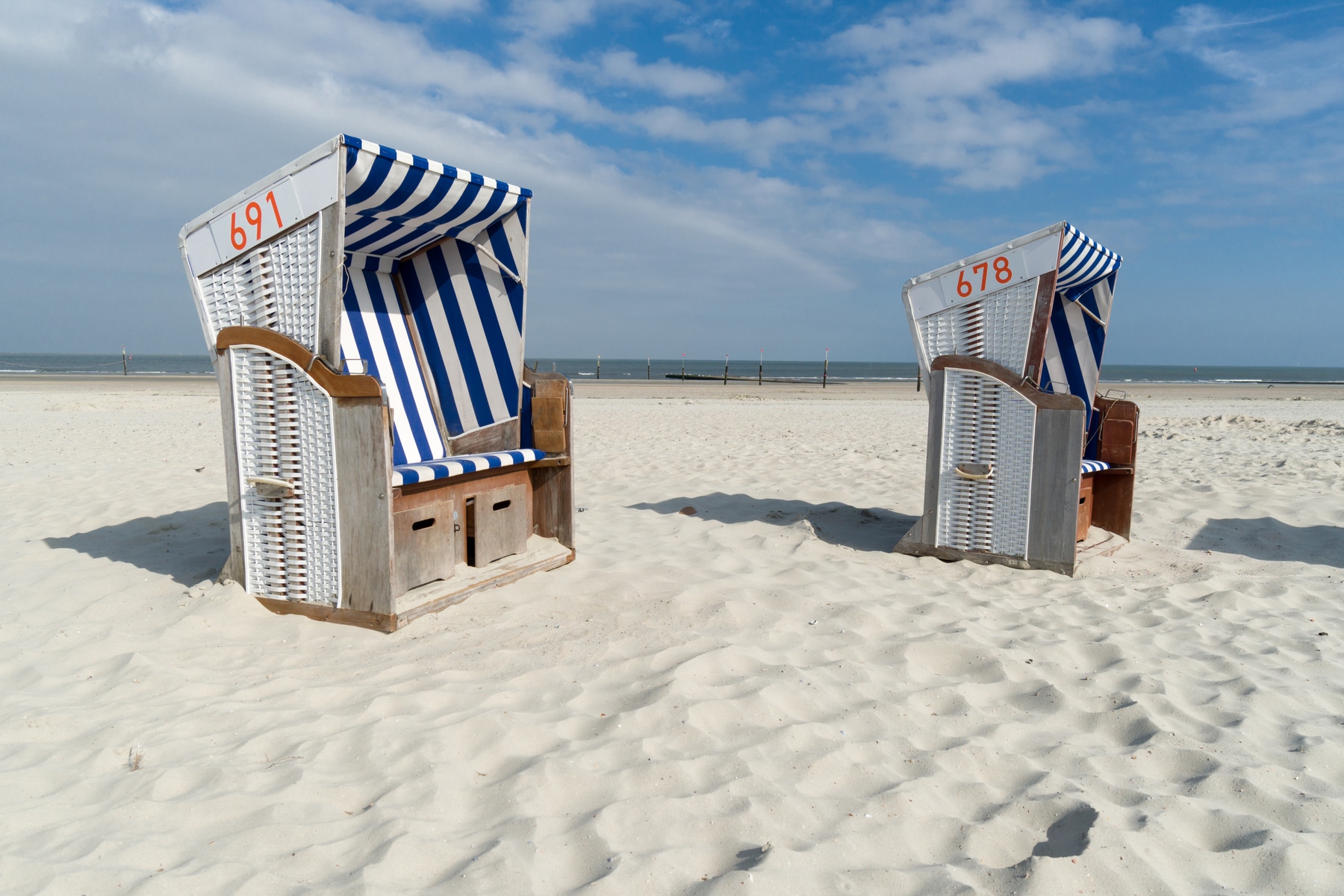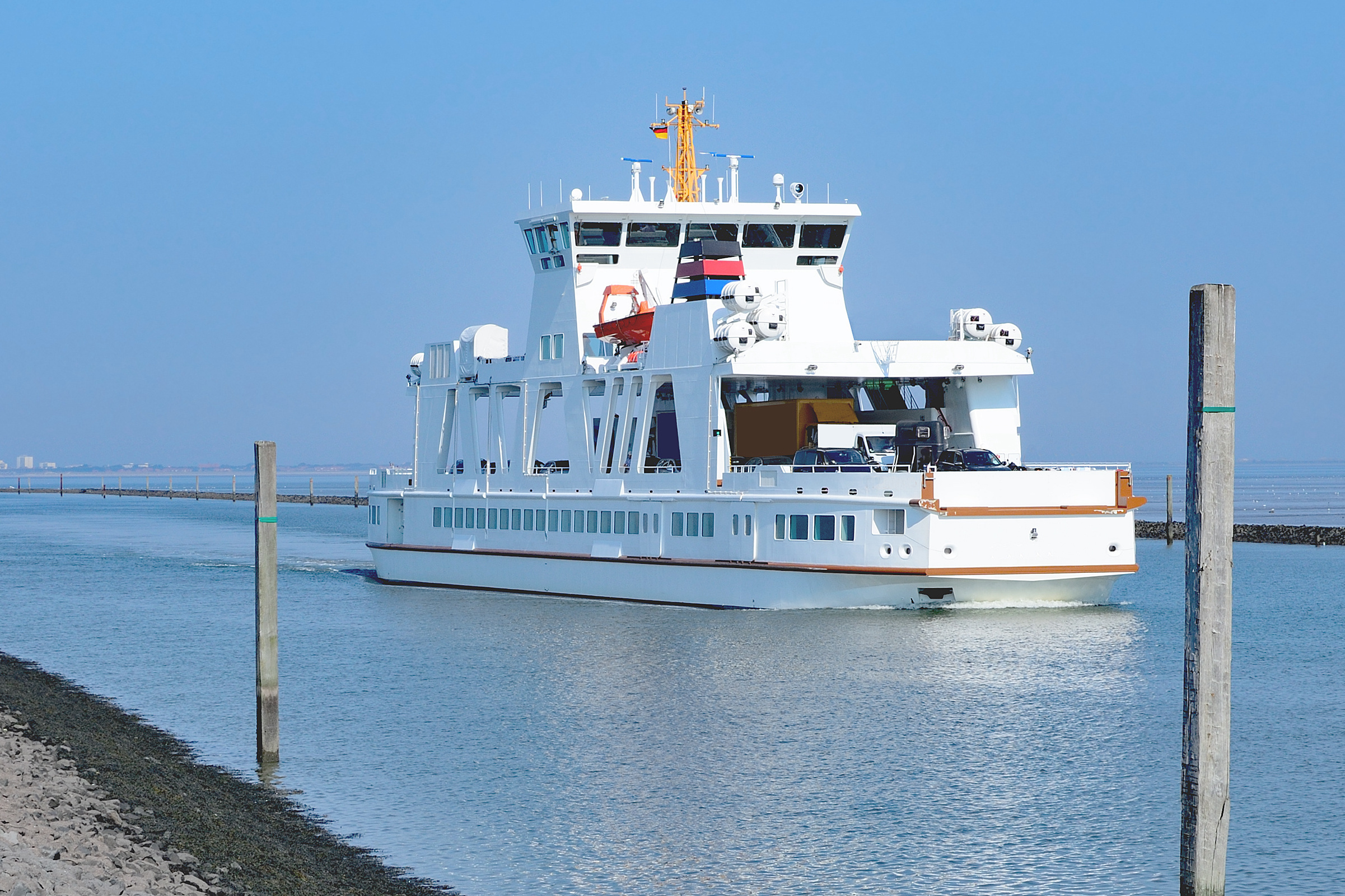- Home ›
- Germany ›
- Lower Saxony ›
- Islands
Islands are paradises embraced by the sea, where the longing of their visitors is often fed by books. This is no different on Norderney, Germany's oldest North Sea resort, even if many an islander thinks that this idyllic piece in the sea actually deserves to be sung about more often by aesthetes. After all, Heinrich Heine wrote a cycle here that he called "The North Sea.
"I love the sea like my soul," the poet from Düsseldorf summed up the impressions of his frequent visits to Norderney. While not everything he put down on paper about the island flattered the souls of the locals, Heine's lines spoke of a deep affection for the dunes, the reeds and the spray of the surf. And so the people of Norderney erected a monument to Heinrich Heine. It stands, cast in bronze, in front of the historic Kurtheater.
It was by no means always only the rich and the beautiful who spent carefree days on Norderney and rented a basket on the beach in front of the promenade. But the island nevertheless became the epitome of a declared destination of crowned heads very early on. One of the first to visit in 1863 was none other than the blind King George V of Hanover. And because he liked the spicy air of the North Sea, he ennobled Norderney by declaring the island one of his summer residences. In later years, the Guelphs came and went there, and today's vacationers strolling through the alleys and streets sometimes find themselves on historical ground.
After all, what today is rather disdainfully referred to as "profane buildings" came into being. On Norderney, they withstood the storms in blessed and unblessed times. Just like the impressive spa hotel or the bazaar building and the Conservationshaus. And since the royal Hanoverians maintained a close relationship with the British Crown, the United Kingdom was actually ruled from Norderney for a brief period of the 19th century.
It is quite rare for the past and present to meet, but on Norderney this is the case. Under a copper roof, the historic Marienhöhe presents itself in an everlasting splendor. For 170 years now, the pavilion has been enthroned on a dune, and vacationers who want a special ambience can have tea served in what is now a café. This was the declared favorite place of Queen Marie of Hanover, who invited the ladies of her court here for chats and parties. "Beloved Misi" was what King George V called his wife, who came from the House of Saxe-Altenburg and whom he had met on Norderney.
If you want to learn more about the history of this unique North Sea seaside resort, you should visit the local history and bathing museum, which is housed in an old fisherman's house not far from the western beach. There, guests can gain intensive insights into the life cycle of the islanders and into social developments over the centuries. This is a place where Norderney cherishes its memories.
Some things on the island have taken on a bit of patina, but even in this expression of an aging process, many guests see a pinch of romance and recognize the charm of a bygone era. In this, Norderney clearly stands out from all the East Frisian islands in the neighborhood. They then stand in amazement in front of the redoubt in the spa gardens, which was once built as a bulwark against the British who were stationed on Helgoland. Otto von Bismarck was a guest on Norderney when he was very young. And so was the later Field Marshal Blücher. As the story goes, he fell in love with the casino's gaming tables in particular. And probably also with the haddock, beans and mutton served to him in the Conservationshaus.
It is the dunes that even in those times had attracted the noble visitors of the island and that they chose as the destination of their frequent carriage rides. For kilometers, the beach still presents itself with its pearly white sand and with the urban nature of the Wadden Sea as part of the great National Park. Today, most vacationers feel particularly comfortable on the west beach or the north beach. From there it is only a stone's throw to the hotels and their amenities. But if you are good on foot on Norderney and want to get away from the vacation crowds, you can hike to the eastern end of the island. There you can see the small neighboring island of Baltrum, if the view is not clouded by haze or fog.
On this periphery of Norderney, you can also see the wreck of a ship that has been lying there since 1967. This is an old mussel dredger that met its doom when it tried to tow a herring lugger out of the sand of the Wadden Sea. The fishermen managed to save their boat, but the dredger has been exposed to the destructive force of the elements ever since.
Many of the island's guests are always on the move by bicycle. They have parked their car either at the pier in Norddeich or in front of their hotel. An interesting destination of a bicycle tour is the old lighthouse, which dates back to 1874 and towers exactly 54.60 meters above the dunes with its bricks. If you want to go to a lofty height to enjoy the unique view of the surroundings from there, you should know that there is no elevator in the listed lighthouse. Instead, there are 253 steps.
The lighthouse is still in operation and sends the rays of its light out over the expanses of the national park to the open sea. Incidentally, these beams of more than a thousand ground prisms and two dozen lens arrays move not from left to right as usual, but in opposite directions. The question of why this is so is not even answered in the island's history books.
Strangely seem on Norderney those 75 stone lumps in the middle of the city. "Kaiser Wilhelm Monument" is the name of this tower, which was once adorned with a bust of the regent. But this was melted down during the First World War - today a seagull made of plaster can be seen in the same place. Some see this as a turnaround of the islanders from the old-style bourgeoisie. A story is connected with the 75 stones, because they came from as many German cities and provinces, which can be read on the respective plaques.
Behind the classicist facades of the Conservationshaus in the Kurpark is, among other things, the Norderney tourist office. But it also serves as a venue for events with its "White Hall" and its "Great Hall". Stars, starlets and literary figures have performed and continue to perform here, and the island's guests sip their cappuccino in the so-called "Kurpalais". Fresh daily newspapers from the mainland are available every day in the fireplace room, and guests can surf for free at the Internet stations. The library is also worth seeing, with its shelves that reach to the ceiling and contain a wealth of reading matter
A look at Norderney's history book also tells of the beginnings of the Conservationshaus. A certain Dr. Friedrich Wilhelm von Halem, the "Royal Bathing Commissioner", had the straw-roofed building erected in 1800, along with the Kursaal and billiard room. This was worth the price of 1394 talers to him. At that time, three peat-fired tubs were also built in the "warm bathhouse". Four years after the opening of the baths, Norderney recorded 600 guests. On the island, the hospital was named after Dr. van Halem, and the number of guests in those times was more than 300,000 per year.
Plush and almost as if it had fallen a little out of time - that's how the Kurtheater on the edge of the spa park strikes visitors. And yet the small baroque theater, modeled on the opera house in Hanover, is a pearl of the island. For almost seventy years, the house has been the venue of the Landesbühne Niedersachsen Nord. But it also serves as a venue for cinema screenings.
On the days when storms and rain were a nuisance to bathers on Norderney, vacationers were drawn to the wave pool for decades. It was built as early as 1931 and was the first of its kind on the continent. It was great fun for young and old to swim or jump in the artificial waves. One day, however, the historic wave machine with its 90-horsepower engine had had its day and finally became part of a new and modern adventure pool landscape.
And a new term found its way onto the spa scene on Norderney: Thalasso. Since then, the island has boasted the largest Thalasso center in Germany. The word is borrowed from the Greek language and refers to the sea. Thalasso treatments with air, water, algae, silt and sand are designed to help people alleviate their rheumatic diseases or those of the respiratory tract. Fresh and untreated sea water plays an important role. A total of ten thalassotherapy trails between 1.8 and 13 kilometers in length have been set up on the island.
Naturally also to the historical windmill from the year 1862. It is the only one on the east Frisian islands in Lower Saxony. For a long period of time, the "Cape" was the number one tourist attraction on Norderney. It served the seafarers for their orientation. The inhabitants are also proud of their imperial post office. Here, the letters of the vacationers were once processed and prepared for dispatch to the mainland. Those who are interested in the stars will be delighted by a visit to the Wilhelm Dorenbusch Observatory. The lifeboat museum between the Hotel Pique and the Villa Contessa provides insights into the early years of sea rescue. The showpiece is the "Fürst Bismarck". Over a period of several decades, the crew members of stranded ships were rescued with her.
Norderney is a "hotspot" of the summer resort at the North Sea. It is an island worth discovering in all its facets. If you can feel with your eyes and see with your soul, you will absorb the idyll of this island. And since the islands of the German north are endangered beauties, guests on Norderney should treat the beach, dunes and mud flats with care. And they will then start their journey home richly endowed and dream for a long time of the flair of this island with its rich history.


